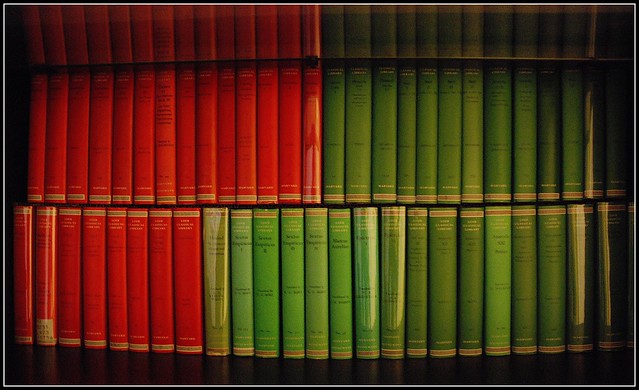 |
This is Mark 1.40 in Sinaiticus accessed in BibleWorks 10's manuscript viewer.
The dot over the upsilon of ΓΟΝΥΠΕΤΩΝ is the second corrector's mark showing that the word is not in other mss. |
With the appearance of the new
Tyndale House Greek New Testament, and arising from
a
discussion about a text critical resource in
Accordance, I decided to compile a comparison of some of the standard
resources for textual criticism looking at texts, apparatus, and
commentaries on textual variants. Resources I have available include:
I looked at two interesting variants in Mark 1.40 (did the leper kneel?)
and 1.41 (was Jesus moved with compassion or anger?). You can see the
document I've linked to see what each offers, but some comments first.
- I've listed the software program I've used to get my texts, and the
implementations vary. The beauty of all of them, however, is the
hyperlinking which provides information on the manuscript and its date
and more. I'd hate to do in-depth textual criticism without these
programs.
- The Nestle-Aland 28 (NA28) and United Bible Society (UBS5) are the
eclectic critical texts with the NA28 trying to offer a fuller listing
of variants and the UBS5 focusing only on more significant variants.
Each has a slightly different approach to presenting variants.
- The CNTTS does not offer a recommended text but includes the most full
catalog of variants. Any serious work really needs to consult this
resource.
- The Tyndale House GNT is based on the mid-19th century text by
Tregelles but with updates based on new texts and greater attention to
scribal habits.
- The SBLGNT is a Greek text, but it is not intended to be a critical
edition of Greek mss but rather reflects differences among other
editions of the GNT. (Westcott-Hort, Tregelles, NA28, Robinson-Pierpont)
- The Comprehensive NT only provides notes indicating differences
between Alexandrian and Byzantine text families and some of the English
versions which reflect each.
- Metzger's Textual Commentary provided a guide to the UBS
editions explaining the committee's choices. Omanson's Textual
Guide is a direct descendant that provides fuller explanation
and is more accessible to non-specialists. Comfort's NTT&T
Commentary also is oriented to a non-specialist.
- The NET Bible's tc=text critical notes attend to the more
significant text variants (though I was surprised that there was not a
note to Mark 1.40) and provides a balanced and reason explanation for a
preferred reading. For my seminary students, this provides just about
all they need to know. When I teach textual criticism, I teach enough so
that they can understand and appreciate the NET Bible notes.
- One helpful online resource is the "Student's Guide" which
provides a summary of significant variants.
- Wieland Willker's "Online Textual Commentary" deserves special
recognition. The "commentary discusses the 1500 most important textual
variants of the Gospels,
plus about 500 minor ones, on about 2600 pages." Note! That's just for
the Gospels! On the basis of his thorough work, he also includes
suggestions for improving NA28. In addition to manuscript evidence, he
marshals plenty of other related evidence from parallels and the
Patristic literature. Where the others have a paragraph of commentary,
he provides pages.
SUMMARY: Take a look at the linked document to see how each of these
resources I've listed compares. The NA28 remains as something of a
standard, but it is more than most people need. As noted, I recommend the
NET Bible's notes for my students as the most accessible to identify
significant variants and get a quick commentary about what's going on. For
something a bit more thorough and exhaustive, I like Omanson's
Textual
Guide, especially since he remains in dialog with Metzger. If
you're looking at a Gospel text and really want to do more study, be sure
to consult Willker's work.
HERE is the PDF you can view.




